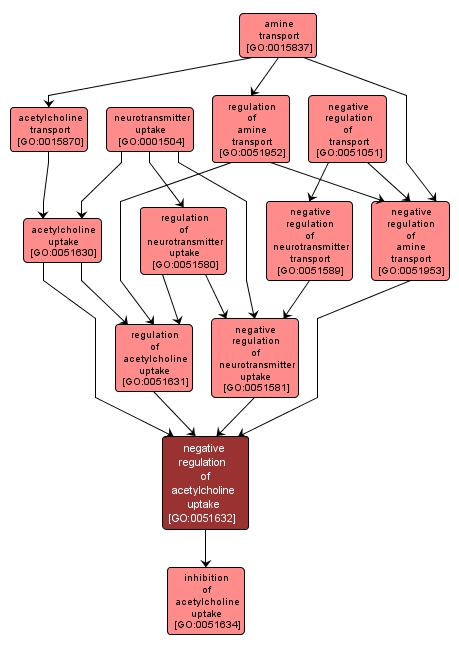GO TERM SUMMARY
|
| Name: |
negative regulation of acetylcholine uptake |
| Acc: |
GO:0051632 |
| Aspect: |
Biological Process |
| Desc: |
Any process that stops, prevents or reduces the frequency, rate or extent of the directed movement of acetylcholine into a cell. |
Synonyms:
- down-regulation of acetylcholine uptake
- downregulation of acetylcholine uptake
- negative regulation of acetylcholine import
- down regulation of acetylcholine uptake
|
|

|
INTERACTIVE GO GRAPH
|














